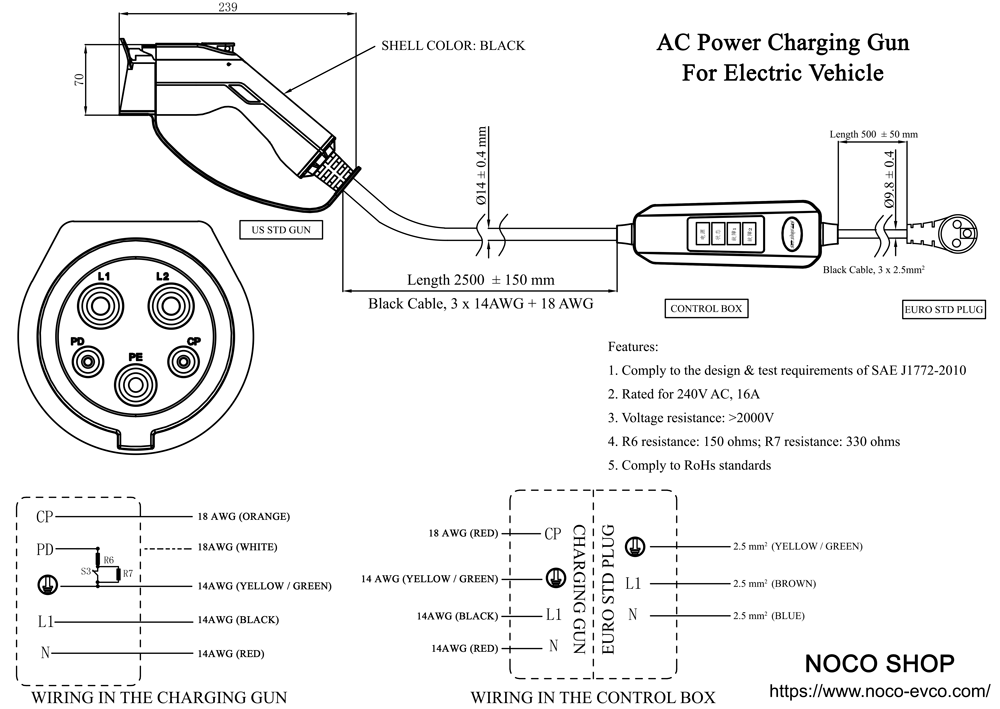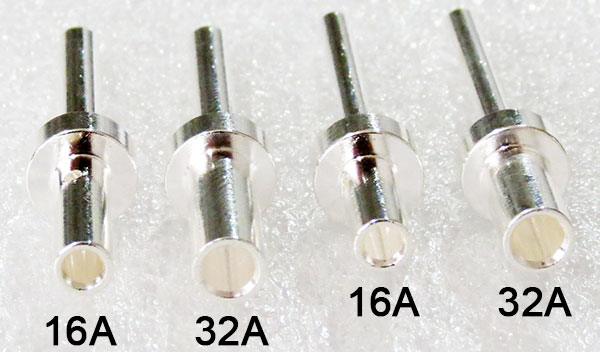|
Series Motor Control
Controller
Assemblage
SepEx Motor Control
Controller
Assemblage
PM Motor Controller
AC Motor Controller
Programmer
Contactor / Solenoid
Meter / Gauge
Throttle & Tiller Head
Motor
Connector
DC Converter & Other |
Free shipping to: America: Canada, USA, Mexico Africa: South Africa Asia: Cambodia, China, HongKong, Indonesia, Japan, Macau, Malaysia, Philippines, Singapore, South Korea, Taiwan, Thailand, Vietnam Europe: Austria, Belgium, Denmark, Finland, France, Germany, Ireland, Netherland, Norway, Sweden, Switzerland, United Kingdom Oceania: Australia, New Zealand Russia (not available for far regions, the delivery delay may be 20-45 working days, depending on the destination, please contact us before making your purchase) For more details, click here... |
 |
| Level 1 and Level 2 SAE J1772 Connector With Cable Mode 2, Cable Length 2500 mm 120V AC / 240V AC - 16A / 32A |
|||||
|
Lowest Unit Price 56.00 USD
|
|||||
Electric Vehicle Charging Gun With Control Box, Mode 2SAE J1772 (IEC Type 1) Standard Electrical Connector With CableFeatures
About SAE J1772: SAE J1772 (IEC Type 1), also known as a "J plug", is a North American standard for electrical connectors for electric vehicles maintained by the SAE International and has the formal title "SAE Surface Vehicle Recommended Practice J1772, SAE Electric Vehicle Conductive Charge Coupler". It covers the general physical, electrical, communication protocol, and performance requirements for the electric vehicle conductive charge system and coupler. The intent is to define a common electric vehicle conductive charging system architecture including operational requirements and the functional and dimensional requirements for the vehicle inlet and mating connector. Diagram (typical application for european region):  We supply also:
 Interchangeable: the contact size of 16A connector is the same of 32A connector. So 32A connector can replace 16A connector. But 16 connector should not be used for replacing 32A connector due to its small current capacity. These SAE J1772 charging guns are designed for "Mode 2" of residential charging stations, equipped with a charging control box which offers stable charging process and high safety margin for both electric vehicle and charging station. Residential charging stations: an EV owner plugs into a standard receptacle. A home charging station usually has no user authentication, no separate metering, but may require wiring a dedicated circuit to have faster charging. Some portable chargers can also be wall mounted as charging stations. Residential charging modes:
|
|||||
|
| Level 1 and Level 2 SAE J1772 Connector With Cable Mode 2, Cable Length 2500 mm 120V AC / 240V AC - 16A / 32A |
|
Lowest Unit Price 56.00 USD
 |
With 2.5 meters EV power cable, the SAE J1772 (IEC Type 1) charging gun offers high efficiency and safety for electric mobility vehicle battery charging process (charging mode 2). Features
About SAE J1772: SAE J1772 (IEC Type 1), also known as a "J plug", is a North American standard for electrical connectors for electric vehicles maintained by the SAE International and has the formal title "SAE Surface Vehicle Recommended Practice J1772, SAE Electric Vehicle Conductive Charge Coupler". It covers the general physical, electrical, communication protocol, and performance requirements for the electric vehicle conductive charge system and coupler. The intent is to define a common electric vehicle conductive charging system architecture including operational requirements and the functional and dimensional requirements for the vehicle inlet and mating connector. Diagram (typical application for european region):  We supply also:
 Interchangeable: the contact size of 16A connector is the same of 32A connector. So 32A connector can replace 16A connector. But 16 connector should not be used for replacing 32A connector due to its small current capacity. These SAE J1772 charging guns are designed for "Mode 2" of residential charging stations, equipped with a charging control box which offers stable charging process and high safety margin for both electric vehicle and charging station. Residential charging stations: an EV owner plugs into a standard receptacle. A home charging station usually has no user authentication, no separate metering, but may require wiring a dedicated circuit to have faster charging. Some portable chargers can also be wall mounted as charging stations. Residential charging modes:
|
 |
 |
 |
 |
 |






